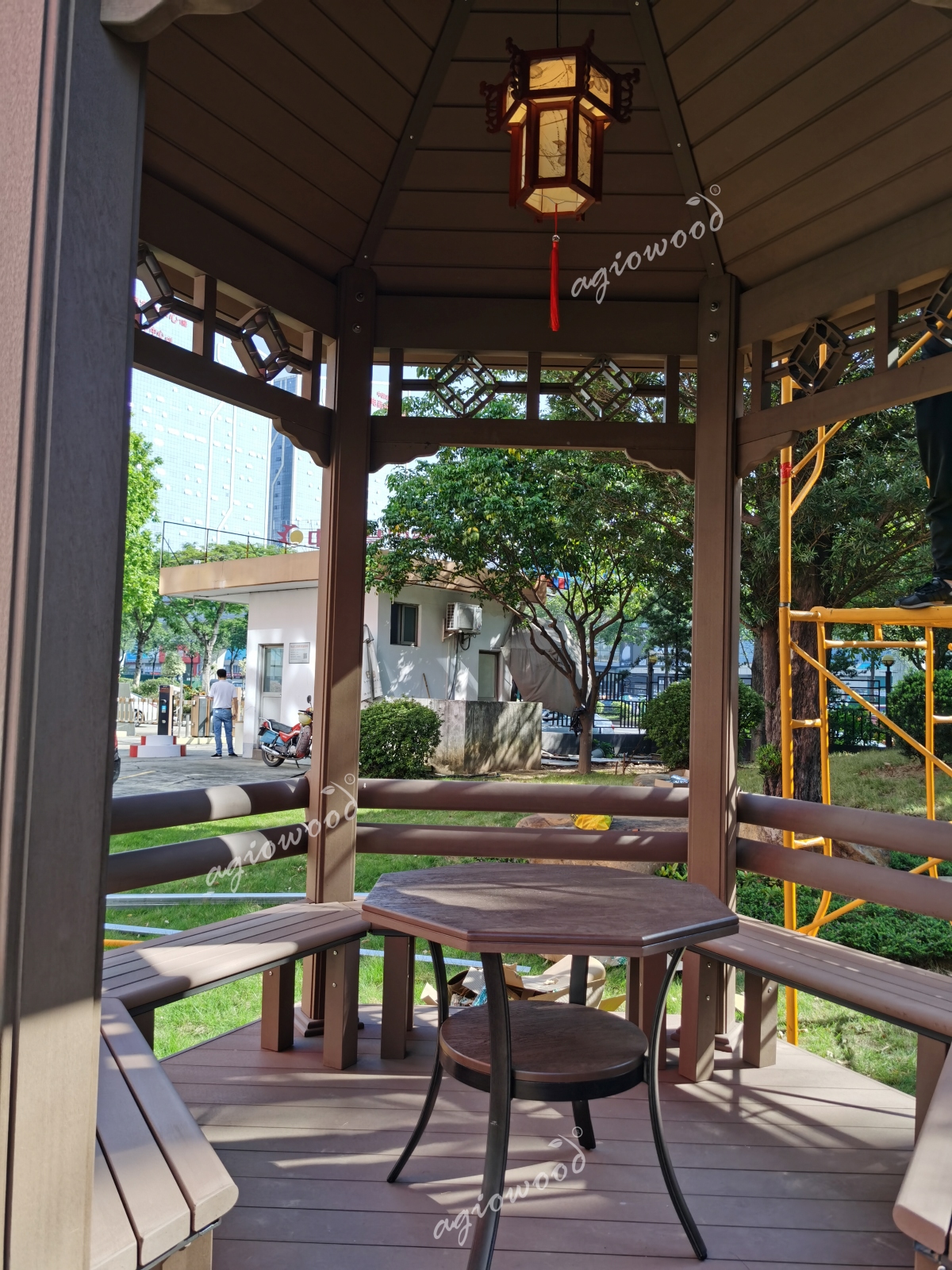
When enhancing outdoor spaces, structures like gazebos and pavilions are popular choices. While both offer shelter and aesthetic appeal, they differ in design, functionality, and typical use cases. Understanding these differences can help you select the structure that best suits your needs.
Design and Structure
Gazebos are traditionally octagonal or hexagonal structures with a solid roof and partially open sides, often featuring railings or low walls. They may include built-in seating and are typically standalone features in gardens or parks, serving as focal points that invite relaxation and intimate gatherings.
Pavilions, on the other hand, are generally larger with a rectangular or square footprint. They feature a solid roof supported by columns and have completely open sides, providing unobstructed views and ample airflow. This open design makes pavilions ideal for hosting larger gatherings and accommodating various activities.
Functionality and Use
The enclosed nature of gazebos offers a cozy retreat, making them perfect for quiet relaxation, reading, or small social interactions. Their distinctive shapes and decorative elements add charm and serve as ornamental centerpieces in outdoor settings.
Pavilions' open and spacious design allows for versatile use, including hosting events, outdoor dining, or serving as shelters in public parks. Their larger size and adaptability make them suitable for diverse functions, from family gatherings to community events.
Materials and Construction
Gazebos are commonly constructed from wood, providing a traditional and natural look. They may also feature intricate designs and detailing, enhancing their aesthetic appeal.
Pavilions are often built using robust materials like wood or metal, designed to withstand various weather conditions. Their construction focuses on durability and the ability to accommodate larger groups, with designs that can be customized to fit specific needs.
Hexagonal Pavilions: A Unique Blend
A Hexagonal Pavilion combines elements of both structures, featuring the six-sided design of a gazebo with the open, spacious nature of a pavilion. This design offers a unique aesthetic appeal and functional versatility, making it suitable for various outdoor settings.
For instance, the PP WPC Hexagonal Pavilion utilizes Wood-Plastic Composite (WPC) materials, offering durability and low maintenance. The use of WPC ensures resistance to rot, decay, and insect damage, providing a long-lasting structure that maintains its appearance over time.
Another example is the Metal Tube Hexagonal Pavilion, constructed with metal supports that provide a modern look and enhanced structural integrity. The metal framework allows for larger spans and open spaces without the need for additional support, making it ideal for accommodating more significant gatherings.

Comparison Table: Gazebo vs. Pavilion
| Feature | Gazebo | Pavilion |
| Shape | Typically octagonal or hexagonal | Generally rectangular or square |
| Size | Smaller, suitable for intimate settings | Larger, suitable for hosting events |
| Sides | Partially enclosed with railings or low walls | Completely open, supported by columns |
| Roof | Solid, often with decorative elements | Solid, designed for maximum coverage |
| Materials | Commonly wood, WPC | Wood, metal, WPC |
| Functionality | Ideal for relaxation and small gatherings | Versatile use, including events and dining |
| Aesthetic Appeal | Adds charm and serves as a garden focal point | Provides a spacious and open environment |
FAQs
Q: Can a gazebo be used for large gatherings?
A: Gazebos are generally designed for smaller groups due to their size and partially enclosed nature. For larger gatherings, a pavilion would be more suitable.
Q: Are hexagonal pavilions customizable?
A: Yes, hexagonal pavilions can be customized in terms of size, to suit specific preferences and needs.
Q: What maintenance is required for WPC pavilions?
A: Wood-Plastic Composite pavilions require minimal maintenance, as they are resistant to rot, decay, and insect damage. Regular cleaning is typically sufficient to maintain their appearance.
Q: Do metal tube pavilions rust over time?
A: High-quality metal tube pavilions are often treated with protective coatings to prevent rust.
Q: How do I choose between a gazebo and a pavilion?
A: Consider the intended use, size of gatherings, desired aesthetic, and available space. Gazebos are ideal for intimate settings, while pavilions offer versatility for larger events.
In conclusion, understanding the distinctions between gazebos and pavilions, as well as the unique features of hexagonal pavilions, allows for informed decisions when enhancing outdoor spaces. Whether seeking a cozy retreat or a versatile venue for gatherings, there's a structure to meet every need.
















